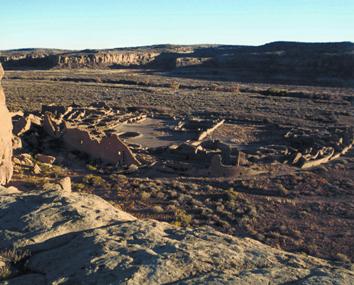As readers of this blog know, I’m in the process of forming my own CRM firm in the Great Basin. While I plan to start small so I can iron out the wrinkles in owning a business, eventually, I imagine I’ll have a small number of full-time and temporary employees. One of the things I’ve given a lot of thought to over the years is the company bonus structure.
The first bonus I ever received in archaeology was on my second project ever. I was a few days into working for a non-profit firm (aren’t they all?) and it was the end of the calendar year. At the Christmas party the PI gave everyone a card that had a $100 bill inside. He said that as a non-profit they were authorized to have only a certain amount of money at the end of the year. Usually they spend it on gear and other necessities but that year was particularly lucrative so they gave out bonuses. Not a bad first week for me.
At another company, I received a bonus that was based on a very private company algorithm. I had no idea what it was based on, besides a performance review and the company’s profits that year. I wasn’t sure how much was based on input from the PI or other people in the company. It certainly wasn’t based on continuing education, research, or anything else not tied to the bottom line.
Most of the time there are no bonuses for temporary or seasonal employees. The profit-based bonuses are shared by the salaried employees at the end of the year when all the temp help has been dismissed. Doesn’t seem too fair to me.
My idea for a bonus structure is based on a points system. You start with a maximum of, say, 1,000 points for the year. If you get 1,000 points then you get 100% of the bonus. It’s not tied to a dollar figure because the bonuses, of course, are tied into the amount of money available to give out.
I figure that about 25% of the points will be based on a performance review. The entire point structure should also be altered based on the amount of time the employee was there that year. It wouldn’t be fair to get hired in August, reach max points, and get the full bonus in December. Just doesn’t seem right. Maybe the max bonus could be reduced according to the time at the company that year. Start in August and your get a third of the max bonus for the year. Start in June and you get half.
So, after the 250 points for performance review there are 750 remaining points. I’d like there to be many ways the points can be acquired. People have different responsibilities and should be able to earn points according to those responsibilities.
For example, a project manager should be able to earn points for bringing a project to completion under budget, or putting out a research paper based on a company project. They could get points for putting together a poster or paper for a presentation. Things like that.
Field technicians, even temporary ones, could earn points for attending conferences, writing blog posts about archaeology or CRM related topics, contributing to the company podcast, or for presenting on a topic at monthly company training sessions.
I don’t want the ways you can get points to be set in stone. Think Harry Potter. I’d like to be able to see someone really making a great contribution or doing something really noteworthy and have the ability to give them points for that.
At the company holiday party, where these things are usually awarded, it would be great to see people getting their bonuses that they know they earned. Maybe there could even be a video presentation highlighting the things people did throughout the year.
Trying to avoid this attitude!!To me, owning a company means a lot more than earning money. It means having the ability to create a family of trusted people that all enjoy what they do and that enjoy being with the people they spend most of their days with. We need to take the corporate attitude out of archaeology and start treating it like the passion it is. Not just anyone can get these jobs. You have to decide on a major, stick it out, pay your dues, and hopefully land a good job. Nothing stings more than finally getting that job with security and a decent paycheck and finding out that everyone hates everyone else and that they are all just trying to claw over each other on the way to the top of the pile. That’s the attitude in a number of firms and it’s a real shame.
I may not end up running the most successful CRM firm out there but if my employees come to work with smiles on their faces and are willing to put in the hard work and tough days when it’s required then I think I’ll have accomplished my goal.
Thanks for reading and I’ll see you on one of my projects some day!





